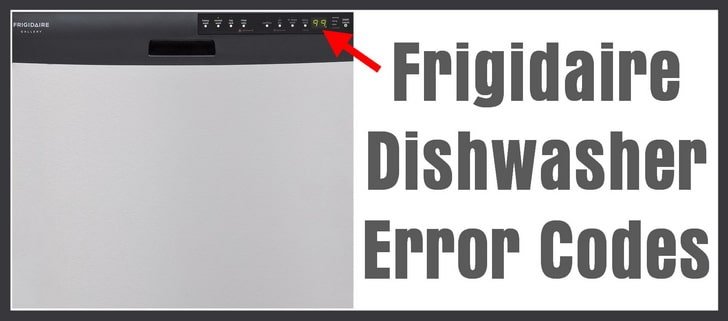
The “LE” error typically signifies a leak detected in the machine. Now, you might be thinking, “Leak? My kitchen floor is dry!” Well, the leak doesn’t always mean an obvious puddle. It can be a small trickle somewhere within the dishwasher that the sensors catch, or sometimes it’s just the machine dealing with a false alarm. Either way, understanding and preventing it is simpler than you might think.
Understanding the LE Error Code on Your Dishwasher
Before we jump into prevention, let’s take a moment to understand what’s going on when this pesky code pops up. Imagine your dishwasher as a well-orchestrated dance — water flows in, cleans, and is then drained out. Anything that interrupts this flow can cause chaos, and the “LE” code is like a warning flag.
Typically, the “LE” error arises due to issues like a faulty water inlet valve, which is sort of like a clogged faucet not letting water through properly. This can disrupt the entire cycle, causing the machine to react. Another common scenario is a blocked or improperly installed drain hose. When water can’t exit smoothly, it creates an imbalance that might trigger the error.
By knowing these common culprits, we can start to figure out how to prevent them. It’s like having a roadmap to a peaceful, error-free dishwasher experience. In addition to mechanical issues, sometimes the error might be due to using too much detergent, which can create excess suds and trick the sensors into thinking there’s a leak.
Common Causes and Simple Solutions
So, what’s really causing this headache? Imagine your dishwasher is having a bad day. It wants things to run smoothly, but sometimes little things get in the way. One potential issue is the door not sealing properly. It’s like trying to keep water in a bucket with a tiny hole — sooner or later, you’re going to have a mess.
Regularly checking and cleaning the door seals can help. Soap scum and food particles can build up, preventing the door from sealing completely. Gently wipe the seals with a damp cloth to ensure they’re clean and snug. While it might sound like a small task, it can make a big difference.
Next, consider the inner workings, like the aforementioned water inlet valve. If it’s not functioning properly, the dishwasher might not fill correctly, triggering the LE code. Inspect and ensure it’s free from debris or blockages. Sometimes, it’s simply a matter of ensuring it’s securely in place and not worn out. Think of it as ensuring your faucet isn’t dripping.
Step-by-Step Prevention Tips
Having a few preventative measures in your back pocket can be a real game changer. To prevent that dreaded LE error from appearing again, make it a habit to perform a quick checkup on your dishwasher once a month. This might seem like an extra chore, but trust me, it can save you some hassle down the line.
Start with the basics: check the seals, just as you would check the rubber wipers on your car. Ensure hoses and connections are tight and free of kinks or damage. Remember, even the smallest disturbance in their placement, just like a garden hose, can cause trouble with water flow.
Also, reconsider how much detergent you’re using. More doesn’t always mean better. Use the recommended amount because excess soap can create suds that confuse the machine’s sensors. Finally, run a cleaning cycle with vinegar every few months. It works wonders in breaking down soap scum and keeps everything fresh and running smoothly.
Why Spotting Trouble Early is Key
Here’s the deal: being proactive is the secret sauce to keeping your dishwasher — and your stress levels — in check. Spotting potential issues early means less chance of them snowballing into that annoying LE error. It’s like noticing a small crack in a windshield before it spreads and requires a complete replacement.
If you notice even a slight issue, like the door not closing as solidly as it used to, or if there are sounds out of the ordinary, take a look. These little signs can serve as early warnings, and addressing them sooner can prevent bigger headaches later on.
In conclusion, treating your dishwasher with a little extra care and attention can extend its life and make your life much easier. By following these steps and being mindful of common pitfalls, you can enjoy a reliable, error-free dishwashing experience. And remember, if all else fails and the LE code keeps reappearing, don’t hesitate to call in a professional. Sometimes, it’s just about knowing when to ask for help.